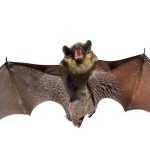Olwomen story of the week
 10 Creepy Science Myths That Aren’t True
10 Creepy Science Myths That Aren’t True
By Jenny Smith From Olwomen
Folk wisdom is usually baseless and comprises more often than not misconceptions that have actually no scientific background. Even though we don’t know their exact relation with science, we believe in them. These are scientific myths. Many of these govern our daily life but are not true at all. Apart from history, sociology, art and literature when these misconceptions touch science particularly issues like diet and health, they need to be compared with scientific facts. Have a look at the list of 10 creepy science myths that aren’t true. The actualities behind these myths will certainly surprise you!
10. Fresh Vegetables Are More Nutritious Than Frozen Ones
Vegetables
The truth is actually the opposite. Studies have claimed that frozen fruits and vegetables have greater capability of retaining nutrients than fresh vegetables. A fruit or vegetable starts losing its nutrients soon after it is picked up from the farm. Fresh vegetables keep losing their nutrients until they are used. On the other hand, frozen vegetables are immediately processed once they are picked up so they have a greater capability of retaining nutrients. This untrue science myth may have caused you to abstain from buying frozen vegetables. Now that you know this science myth is not true, you can buy frozen vegetables without hesitation.
9. Carbohydrates Make You Gain Weight
carbohydrates
Studies have shown that there is nothing in carbohydrates that causes you obesity. The complex carbohydrates present in grains, vegetables and fruits contain energy and are necessary for you. Out of the creepy science myths that aren’t true, this one must have given you a relief if you are trying to lose weight. However, you should avoid simple carbohydrates present in foods made of white flour.
8. Cracking Knuckles Causes Arthritis
Cracking knuckles
The popping sound you hear on cracking your knuckles is due to displacement of air in joint. This has got nothing to do with arthritis. Hearing someone cracking his knuckles may be annoying but it isn’t bad for his health. So dismiss this age old unscientific myth too from the list of your baseless beliefs.
7. We Use Only 10% Of Our Brain
brain
This is a very popular myth and has a huge following. However, there is no scientific evidence proving this statement. This untrue scientific myth has been promoted extensively but could not be proved scientifically. Neurologists are of the opinion that we use 100% of our brain. It’s just that we don’t use 100% of brain at one time but we do use the entire brain over the course of day.
6. It Takes 7 Years To Swallow Digested Chewing Gum
swallow digested chewing gum
The bulk of chewing is made of rubbery polymers called Elastomers. Like any other indigestible substance Elastomers are excreted out of the body as waste. Chewing gum also contains digestible materials like flavoring and coloring agents and these substances don’t take 7 years to digest. These substances are normally digested and do not take any longer than other digestible substances to enter the blood stream.
5. Mount Everest Is The Tallest Mountain On Earth
Mount Everest is the Tallest Mountain on Earth
Mount Everest is the tallest mountain on earth is again one of the creepy science myths that aren’t true. In fact, deciding which one is the highest depends on the way you measure the height. Height of Mount Everest is 29,035 feet and this makes it the tallest mountain above sea level. Mauna Kea Mountain located in Hawaii extends about 20,000 feet below sea level. This makes its total height 33,500 feet. This means that Mauna Kea is 4465 feet taller than Mount Everest. Now that you know the right answer; when someone asks you about the tallest mountain on earth, you know what to say.
4. Antibiotics kill Viruses
Antibiotics kill viruses
This creepy science myth is absolutely baseless. Antibiotics don’t have the ability to kill viruses. In fact, they are exclusively designed to kill bacteria. Using antibiotics for viral infections is actually the misuse of antibiotics and this can do you no good at all. Use of antibiotics for viral infections can cause drug resistance in bacteria commonly present in the body. This can cause bacterial infections that are not even treatable by the antibiotics you commonly use.
3. Dropping A Penny From Tall Building Will Kill Someone
Dropping a penny from tall building
How can people even think that a thing as small and as light weight as a penny can take lives? The terminal velocity of penny thrown down from a tall building is only 105 km/hr. This cannot do much damage to us. Getting hit by a penny is definitely annoying but it is not lethal at all. This creepy myth is not true but it doesn’t mean that you can drop pennies from tall buildings. This annoys people and is not nice.
2. Hair And Finger Nail Continue Growing After Death
Hair and Finger nail
This is probably the weirdest one in the list of the creepy science myths that aren’t true. It refutes the idea of ‘being dead’. Metabolism stops after death and body cannot produce anymore keratin in order to make hair and nails without cellular processes. But the thing is that nails of a dead person actually look bigger. This is not because they are growing, this is because the skin around nails retracts due to dehydration and this makes them look bigger.
1. Bats Are Blind
bats
This myth has a very huge following. Most of the people think bats are blind because of their tiny eyes and their nocturnal hunting habits but studies prove otherwise. Studies have shown that all bats can see and they are sensitive to changing light. Some of the bats have 3 times better vision than humans.
The above list of creepy science myths that aren’t true should make you rethink your beliefs. It is not very easy to accept that the concepts passed on from generation to generation are not true at all. With ever-growing reasoning, it is justified to question the validity of scientific myths and try to look for the scientific evidence behind ideas you believe in. If there is no reliable scientific evidence, then it’s the time to stop conveying the myths.
For more on this story go to: http://olwomen.com/creepy-science-myths-that-arent-true/














